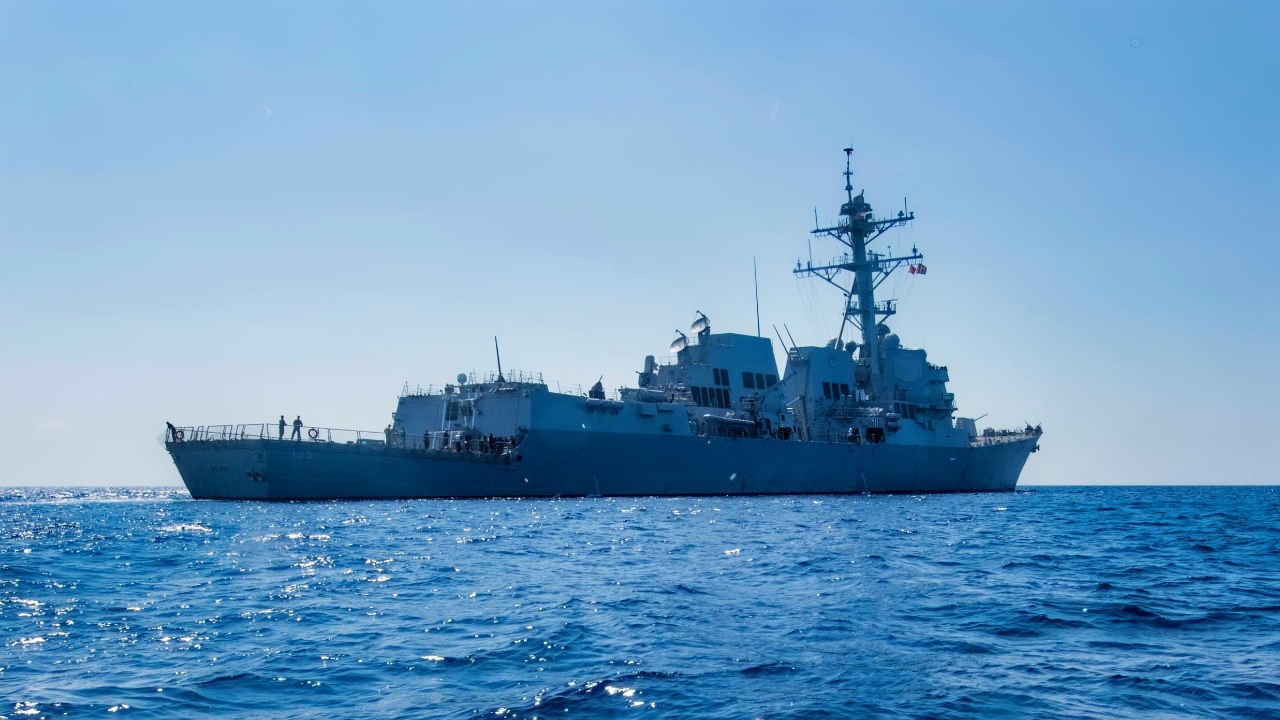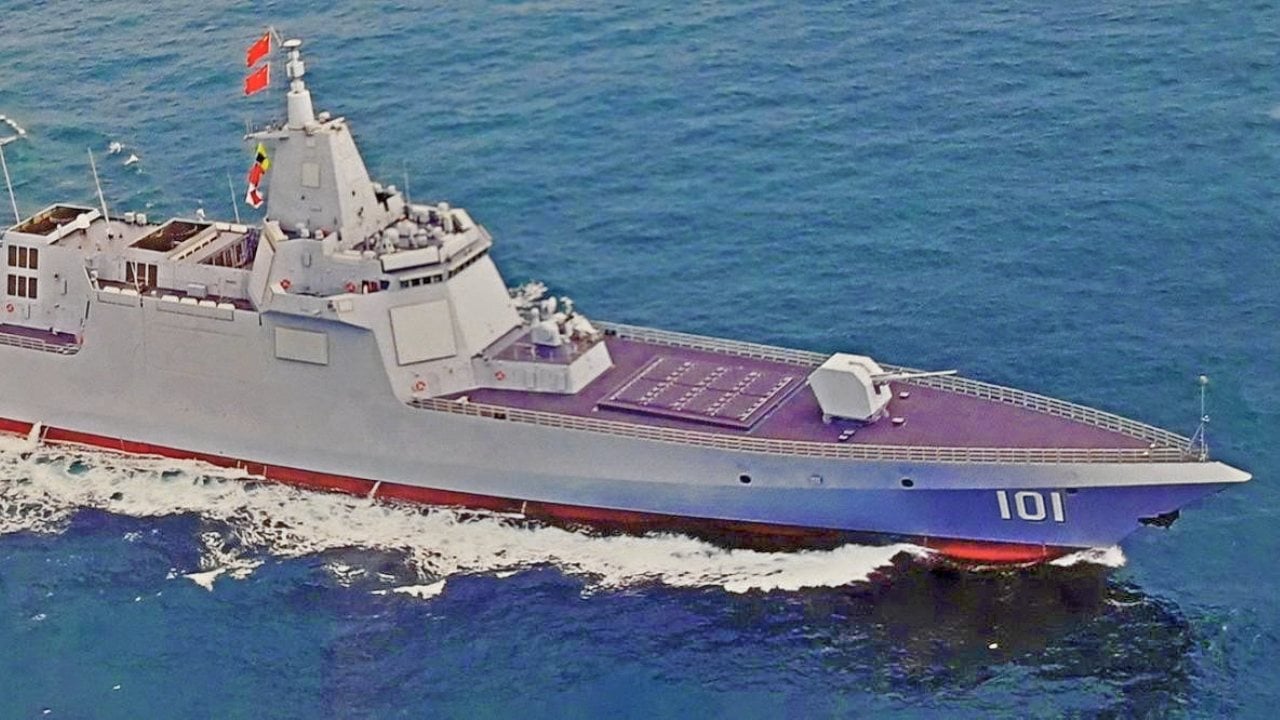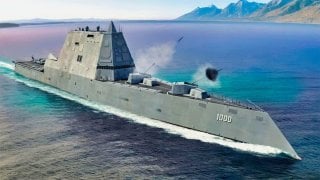Can the U.S. Navy Keep Pace With China? One Admiral Says 'No'
Due to budget constraints, the United States Navy faces significant challenges in expanding its fleet to the desired 381 ships. Vice Admiral James Pitts warned that the Navy could not achieve its expansion goals without a budget increase of 3-5% above inflation.
What You Need to Know: The United States Navy faces significant challenges in expanding its fleet to the desired 381 ships due to budget constraints. Vice Admiral James Pitts warned that without a budget increase of 3-5% above inflation, the Navy cannot achieve its expansion goals. Currently, the Navy's budget may drop to about 2% of the country's GDP—the lowest since the 1920s—making the 2042 timeline for fleet growth unattainable.
-This comes as Chief of Naval Operations Adm. Lisa Franchetti released "America's Warfighting Navy" plan, also known as Project 33, which emphasizes readiness, capability, and capacity to prepare for potential conflicts, particularly with China.
-The plan outlines seven key targets, including eliminating maintenance backlogs, increasing the use of autonomous systems, and improving recruitment and retention. With concerns that China could be ready to invade Taiwan by 2027, there is increasing urgency for the U.S. Navy to enhance its readiness and capabilities despite financial and industrial limitations.
U.S. Navy Warns Budget Shortfalls Threaten 381-Ship Fleet Goal
The United States Navy is the smallest it has been since the First World War, a fact that has been true for nearly a decade. However, the biggest concern now is that while officials and lawmakers have called for the sea service to drastically increase in size to confront threats from China and other potential adversaries, the money isn't there.
With the current level of funding, the U.S. Navy will simply be unable to reach its desired fleet level warned Vice Admiral James Pitts earlier this week, USNI News reported. While speaking at the U.S. Naval Institute and Center for Strategic and International Studies on Tuesday, Pitts explained that the service would need to see its budget increase by three to five percent above the current rate of inflation.
The U.S. Navy has called for a fleet of 381 ships, but given the current budget request, which could fall to about two percent of the country's gross domestic product (GDP) – the lowest since the 1920s – it will likely remain unobtainable.
The current timeline also calls for the U.S. Navy to obtain a fleet of 381 ships by 2042, but only if its shipbuilding budget is increased, and the industrial base's capacity is also expanded.
What About Project 33
Pitts' warning comes just weeks after Chief of Naval Operations Adm. Lisa Franchetti announced the release of " America's Warfighting Navy" plan, which serves as an update to the 2022 NAVPLAN and called for the service to focus on key priorities including addressing maintenance backlogs and recruiting shortfalls.
The plan, which has been dubbed "Project 33" calls for the sea service to be better prepared for a conflict with China.

"We cannot manifest a bigger traditional Navy in a few short years, nor will we rely on mass without the right capabilities to win the sea control contest," the plan stated. "Without those resources, however, we will continue to prioritize readiness, capability, and capacityin that order. We must recognize that the Navy faces real financial and industrial constraints, including the once-in-a-generation cost of recapitalizing our [sea-based] strategic nuclear deterrent."
Project 33 outlines seven "targets" that included ensuring force readiness by "eliminating ship, submarine, and aircraft maintenance delays;" while increasing the use of "robotic and autonomous systems to integrate more platforms at speed;" and creating new command centers that could support a "distributed battlefield;" while the sea service will need to "recruit and retain the force… get more players on the field." In addition, the targets would require delivery of quality service for the sailors, who would be trained to fight "in the real world and virtually;" and finally restoring "the critical infrastructure that sustains and projects the fight from shore."
The U.S. Navy has warned that China could be ready to invade Taiwan by 2027, so the question is whether the U.S. will be ready to respond.

Author Experience and Expertise: Peter Suciu
Peter Suciu is a Michigan-based writer. He has contributed to more than four dozen magazines, newspapers, and websites with over 3,200 published pieces over a twenty-year career in journalism. He regularly writes about military hardware, firearms history, cybersecurity, politics, and international affairs. Peter is also a Contributing Writer for Forbes and Clearance Jobs. You can follow him on Twitter: @PeterSuciu. You can email the author: [email protected].
Image Credit: Creative Commons and/or Shutterstock.


